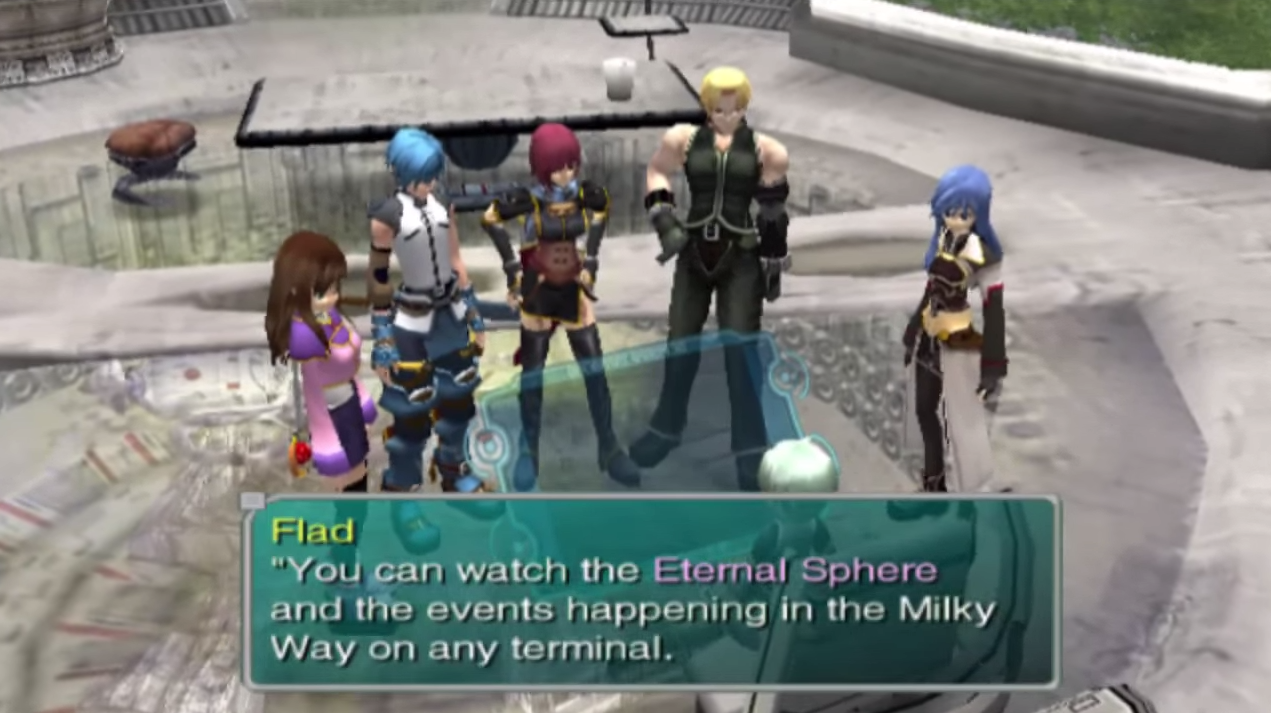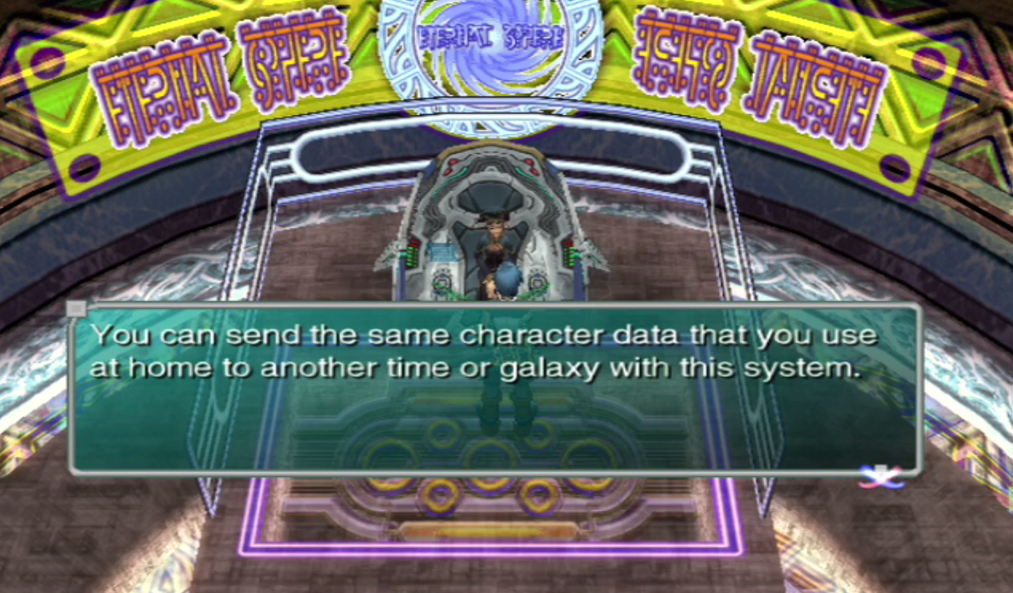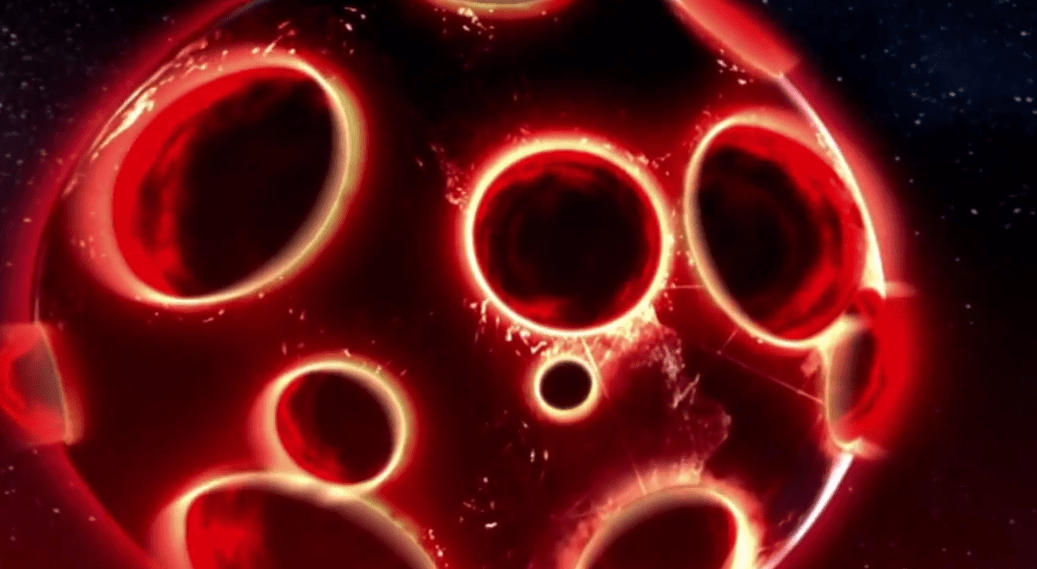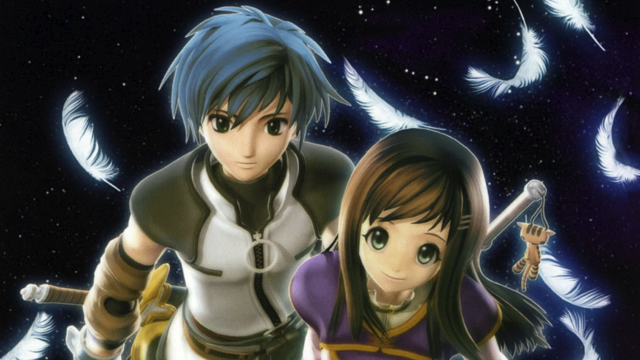Most video games are content just to string the player along through dungeons, towns or corridors full of machine gun cover while dishing out character arcs and weapon upgrades. Only a few try to reflect on the nature of reality and human existence. Star Ocean: Till the End of Time tried to do both.
The fourth game in developer tri-Ace’s science-fiction RPG series, Till the End of Time, which came to the PS4 last week, was notable for a few different reasons. It was the first entry to appear on a semi-modern console with the PS2, and thus the first to bring players into a 3D world inhabited by polygons instead of sprites. It was also the last game in the series that you could say was totally great without wincing or having to recite a list of caveats the length of a novel.
But most importantly, it was the Star Ocean that revealed its characters’ world wasn’t real. Fayt, Sophia and the rest of the motley crew were all part of a computer simulation created by an advanced civilisation. They were avatars inside of a video game, inside of a video game. In classic Star Ocean fashion, the threat that brings the game’s characters together early on turns out to be rather parochial by the mid-way point. The intercontinental struggles of alien races who inhabit familiar fantasy settings are eventually superseded by the real threat: Monsters called “Executioners” who act like a virus trying to delete anomalies in the character’s simulated universe.

It all starts when your characters bust through a magic time portal and arrive in a futuristic city occupied by a few NPCs. One of them screams. Another simply states, “Something came out of the Eternal Sphere display,” while a third responds, “Cool is that a new feature?” Instead of ending up in some dungeon to fight an esoteric boss, the characters are transported outside of the game simulation that created them, resulting in a series of long conversations that approximate the nonsense spouted by The Matrix: Reloaded if it had been passed through a JRPG localisation team first. It was supposed to be an amazing twist. The first time I played Till the End of Time I thought it was massive cop-out.
Almost 13 years later, I feel a bit differently. At the time the twist felt completely out of left field, with the melodrama of the characters reacting to their new existential crisis adding an additional series of eye rolls. Now, the questions poised by the game’s bizarre turn of events do feel more science fiction than untethered fantasy. After all, tech billionaire Elon Musk is a believer. Knowing the trajectory technology is on and the eventual likelihood of convincing virtual realities that might proliferate in the future, what are the odds that our reality is the original one? Not to mention how much of our lives already seem to resemble the weird logic of a designed game.

In a panel discussion last year, resident blockbuster movie debunker Neil deGrasse Tyson made a similar argument. It’s not so much a scientific question of whether empirical evidence or the mathematical equations that help explain how are universe functions can shed light on whether we live in a computer simulation, as a philosophical question. If we could be living in a video game, how do we know we aren’t?
The result of this paradox is one that René Descartes spent his life’s work trying to unravel. “I think therefore I am,” he famously quipped, not solving the problem so much as collapsing it into irrelevance. If you can’t prove you aren’t living inside an illusion created by a malevolent demon, or in Till the End of Time‘s case, a massively-multiplayer online RPG, does it really even matter?

The game come’s to a similar conclusion by the end as well. In what remains one of the most confusing climaxes in a video game, Fayt, Sophia and their friends manage to defeat the “creator” of their simulated universe, but not prevent the mass deletion of it he set in motion. Still, everything seems to turn out just fine, with life returning to normal, potentially thanks to a “Eternal Sphere backup”, but also maybe not. The game can’t seem to resolve the paradox at the centre of its big plot twist either, choosing instead to shove it aside and simply let it hover over the game’s different endings. Maybe the characters were deleted and by the end we’re simply witnessing the echos of their consciousnesses. Or maybe the creators they thought they were encountering in the “real” world were simply the constructs of another simulated universe created by somebody else.
Now that the game’s available again on PS4, you can always go find out for yourself. I definitely recommend doing that over trying the latest addition to the series, Star Ocean: Integrity and Faithlessness, proof that our universe might be real after all, since no civilisation advanced enough to create a digital simulation of another would ever add that to it.

Comments
7 responses to “The Plot Twist In Star Ocean: Till The End Of Time Is A Lot More Believable Today ”
I lost the will to finish this game the first time around so I read up on the infamous twist, wow. I’ve since picked it up again on PS4 hoping to beat it this time. This is a case where knowing what happens beforehand is probably for the best.
Forth? Don’t you mean third?
“Star Ocean: Blue sphere” came out between second story and till the end of time.
I see. Till the End of Time is the third main game but fourth in the series to be released.
I do wish that when games are localised and released outside Japan they keep the numbered order regardless of titles being skipped.
I loved this game but I imagine that has a lot to do with it being my first star ocean game, so I didn’t experience the feeling of the universe being totally upturned like longtime fans had.
Till the End of Time was also my first game and I was tempted to get this HD release just to revisit the experience.
Then I found it is download only so I’m giving it a miss.
I was similarly underwhelmed when I played it on the PS2. I think because the twist comes so early in the game (about halfway) and levels all the dramatic tension it had built prior. The cardboard characters don’t help.
It came out the same time as Kingdom Hearts, both Square Enix games that were attempting to introduce progressive new battle systems into the JRPG genre. Would suggest playing KH instead (or reading some Philip K Dick or something).
Even with the Shark jump twist I adore this game. Got the ps4 version and already working on getting maid outfits for everyone. Good times!